Natural wonders in our back yard – oolichan
When you’re surrounded by wilderness, every day can be a surprise. Yesterday we had planned a day of spectacular scenery, but in addition to that we got a look at just how incredibly rich the natural world around us is.
The weather forecast has been changing often lately, but yesterday morning the report and forecast showed sunshine at both Whitehorse and Skagway. Although it was -28°C (-18°F), the forecast was for highs of -4C and 38F in Whitehorse and Skagway respectively – a great day for a drive.
The first photo was shot at 11:00am between Log Cabin and Fraser, looking south at about Km 40 of the South Klondike Highway. I’m shooting with a Fujifilm Finepix S1800.

We had an early lunch in Skagway, then, as always, we went over to the mouth of the Skagway River to see if there were any seals. Not only were there several seals apparently feeding (in the lower right), we noticed that the tide was exceptionally high. That’s Yakutania Point in the background – except for a strong, bitterly cold North wind, we probably would have walked out there. We decided instead to go to Dyea to see if there were more seals or maybe even a bear freshly out of hibernation.
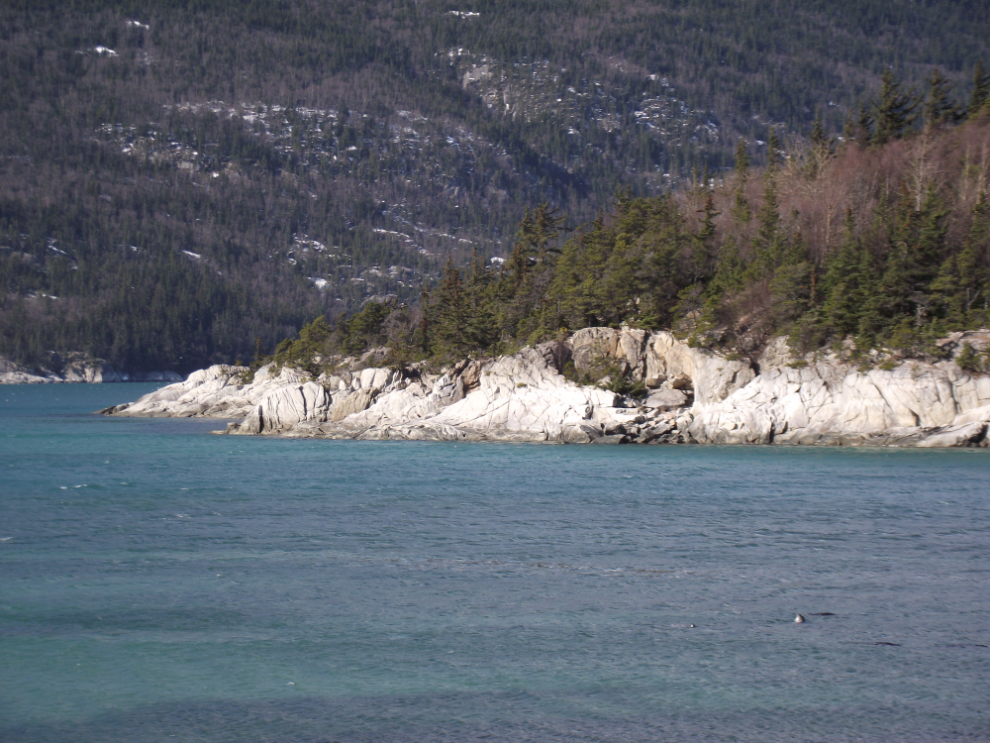
Heading out the Dyea Road.
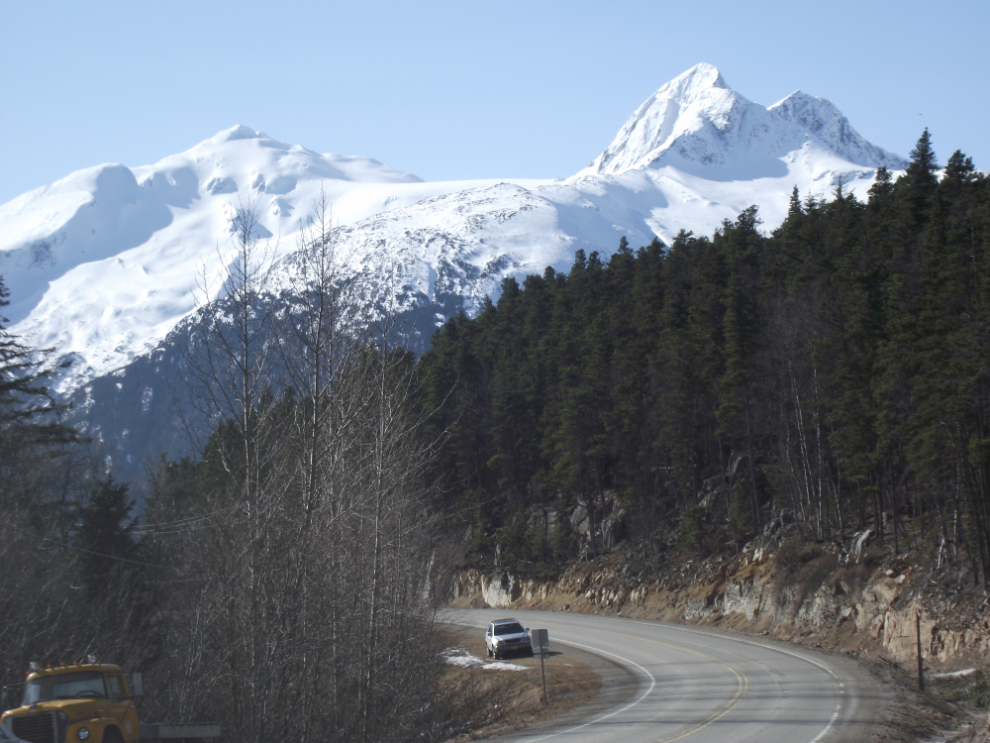
Nahku Bay – the black dot just left of centre is a ferry coming in to Skagway.

As we neared the Taiya River estuary we noticed not only the high water level, but also a lot of activity both in the water and in the air – there were seals and birds everywhere!
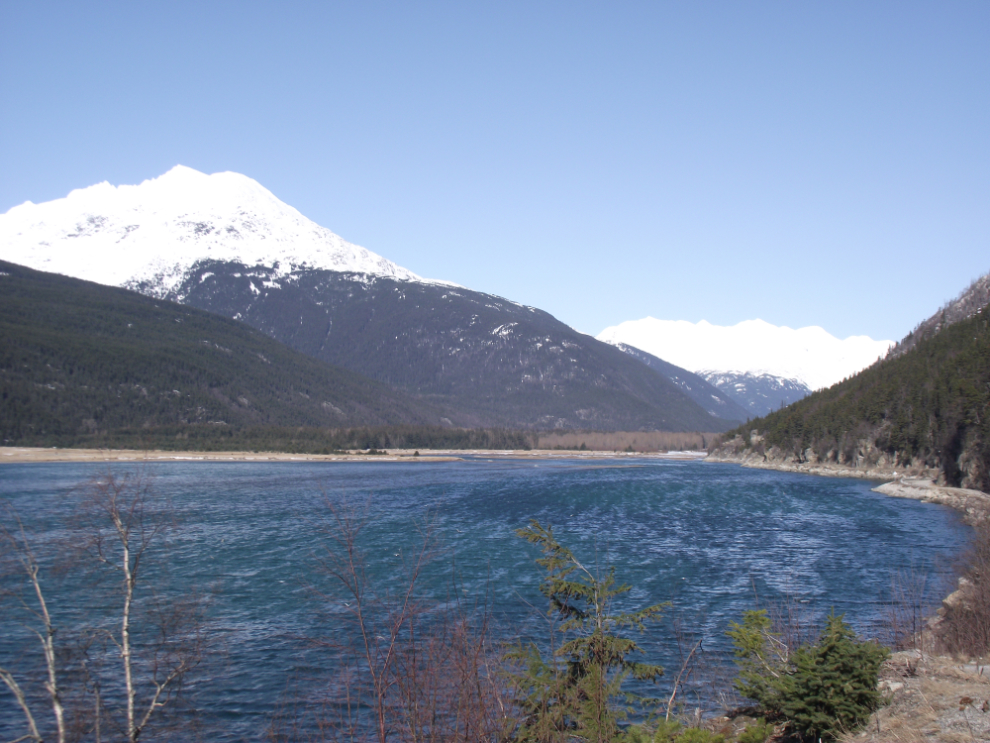
The Dyea Road at the mouth of the Taiya River.
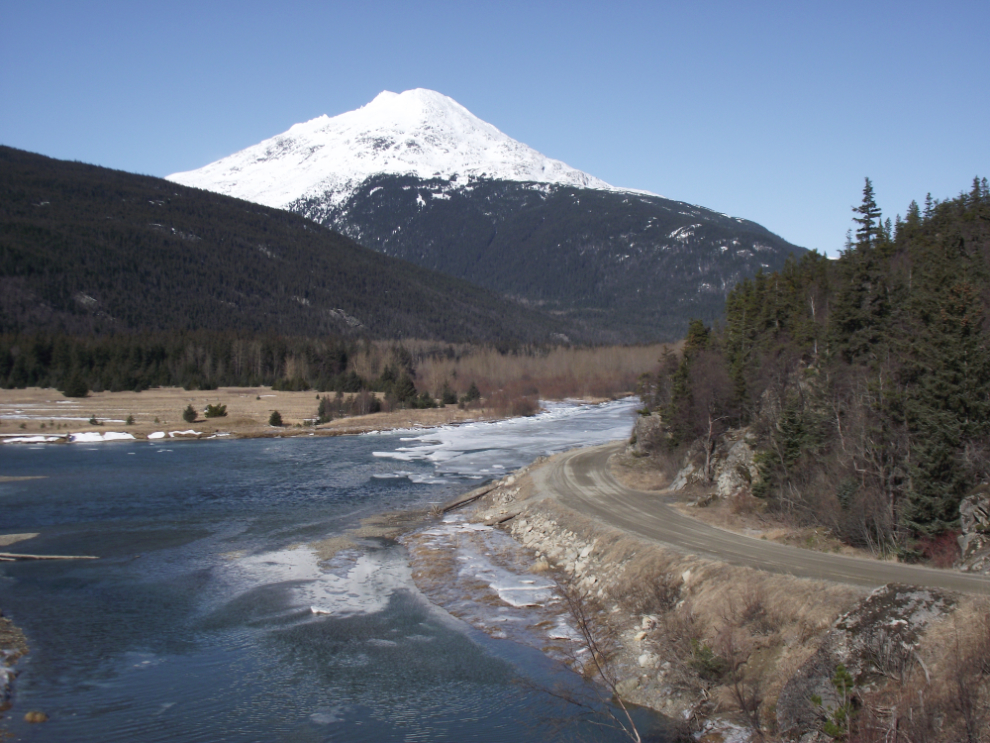
We drove down to the beach at Dyea. From there we could see that the number of gulls was incredible – it looked like every gull in Southeast Alaska was there. The number was certainly into the thousands.
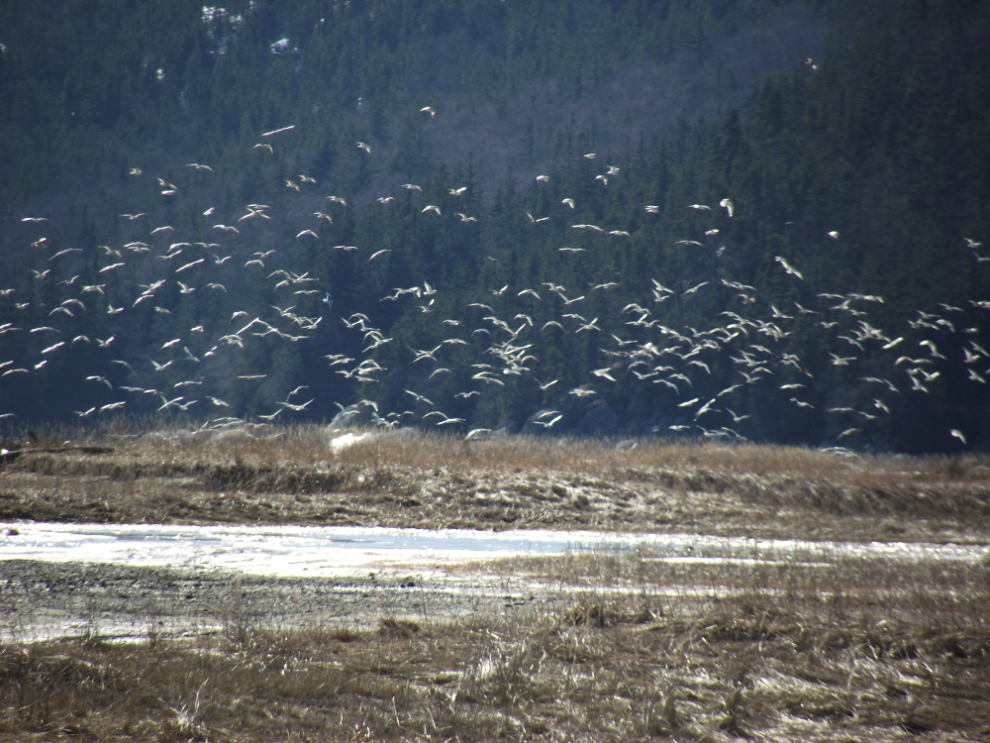
We were impressed by how high the tide was, but it actually had a few feet to go yet. This photo was taken on the beach at Dyea at 12:32 Alaska time (1:32 Yukon) – high tide wasn’t for 2 hours yet (2:29), when it reached 18.99 feet (the normal average here this month is 14-16 feet).
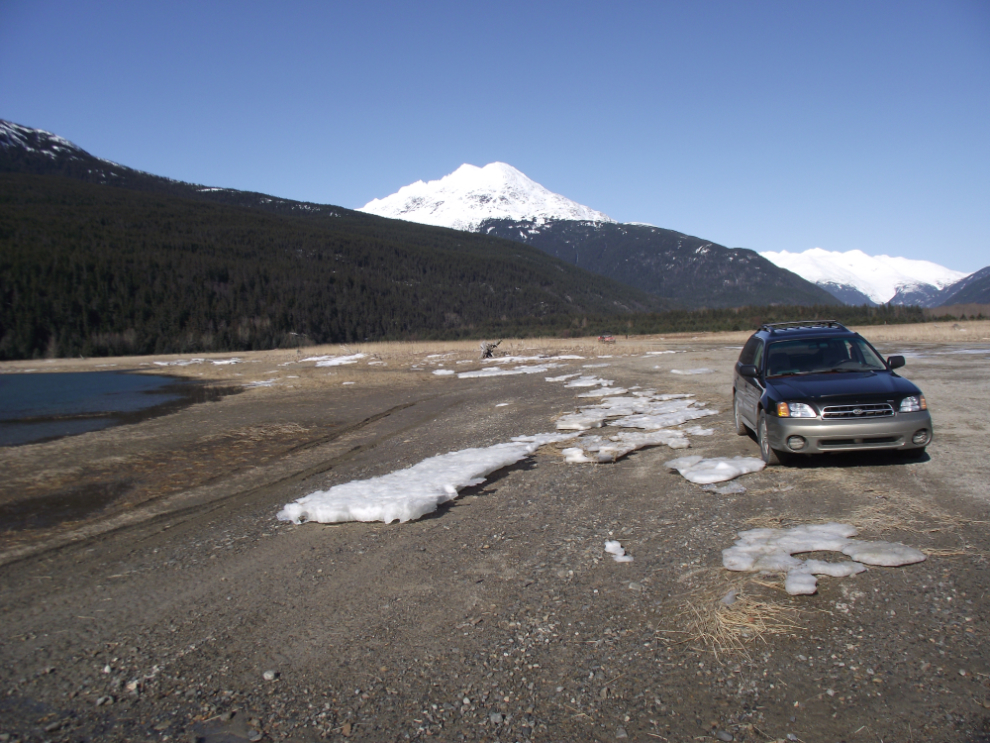
This was the cause of all the fuss – a little smelt usually called as a hooligan in Alaska, but known as oolichan or eulachon in British Columbia and sometimes as candle fish or lampfish. For an excellent report on the significance of this little fish in Alaska, see this 78-page report by the Alaska Department of Fish & Game.
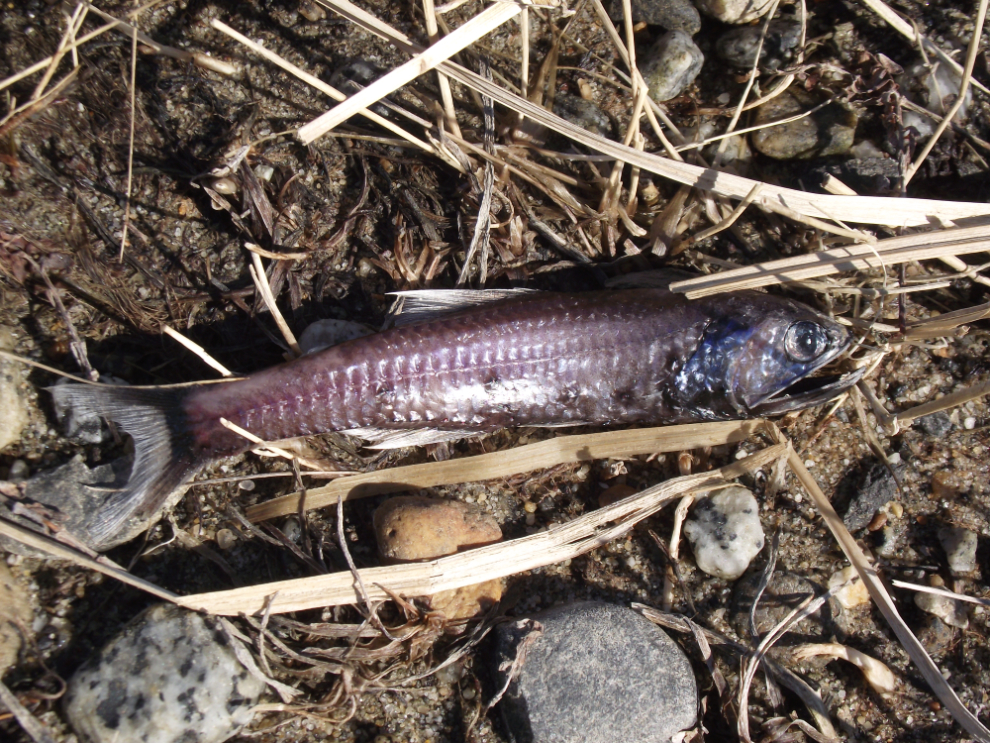
In any season, this is a spectacular place.
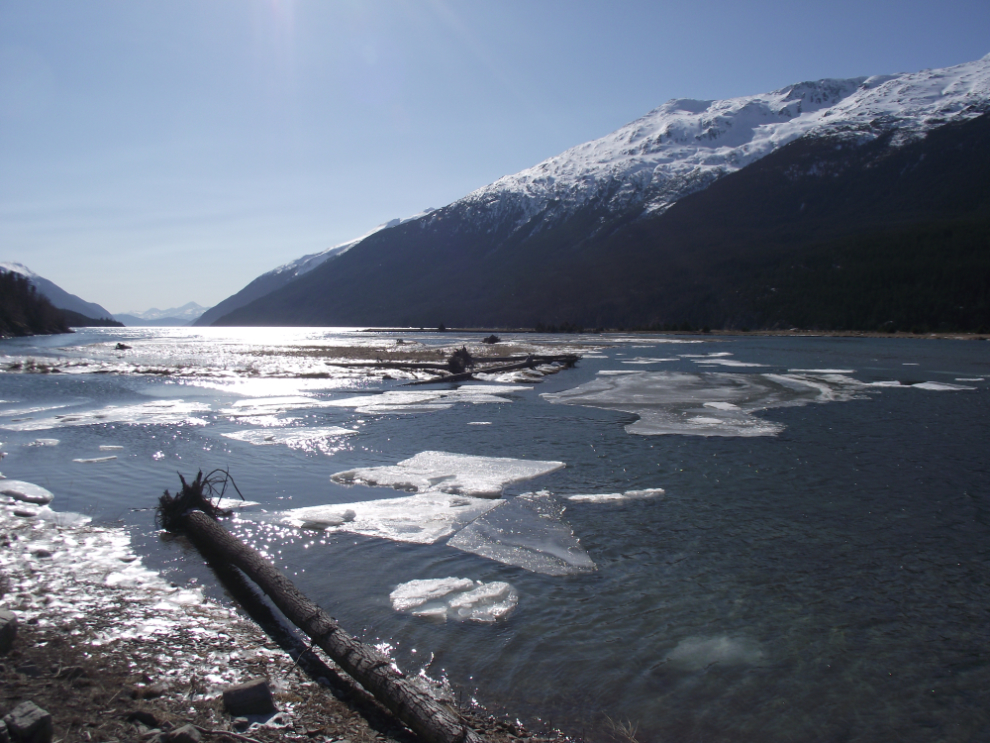
We stopped several times to watch the action of the seals in particular – we’d never seen them so active, with some even breaching clear of the water. This high vantage point shows the gauntlet that the hooligan had to pass through to reach the sea. There are a dozen seals in this photo near the surface and there were more underwater.
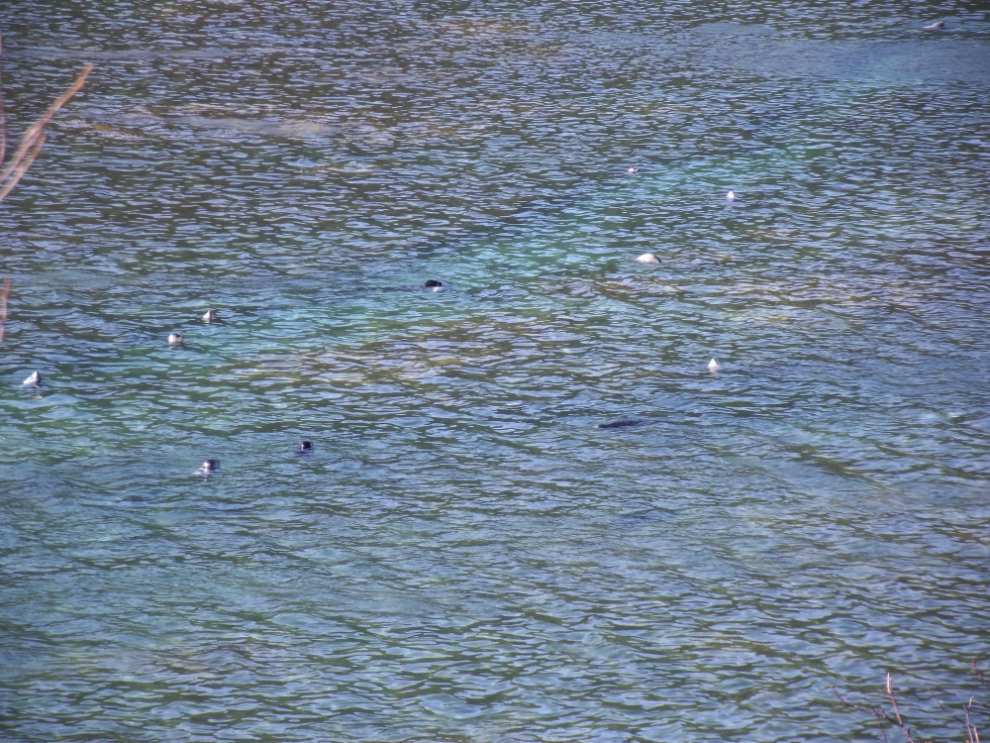
Cathy and Monty watching the show.
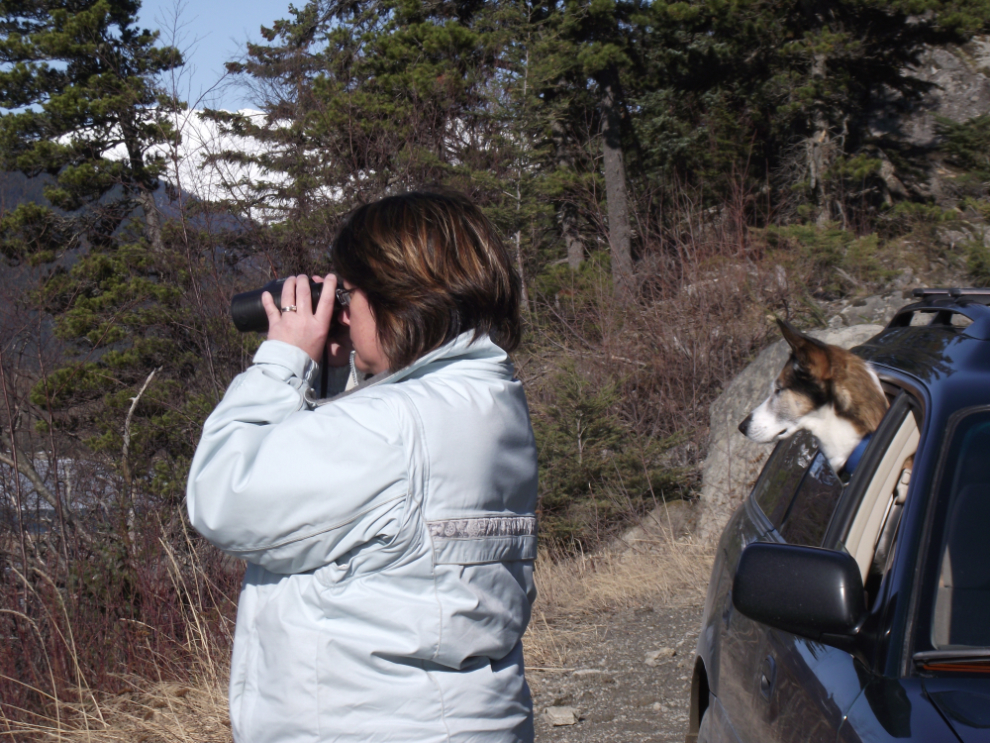
Down in the left corner is our first swan of the season – probably a Trumpeter.

Here’s a closer look at the swan.
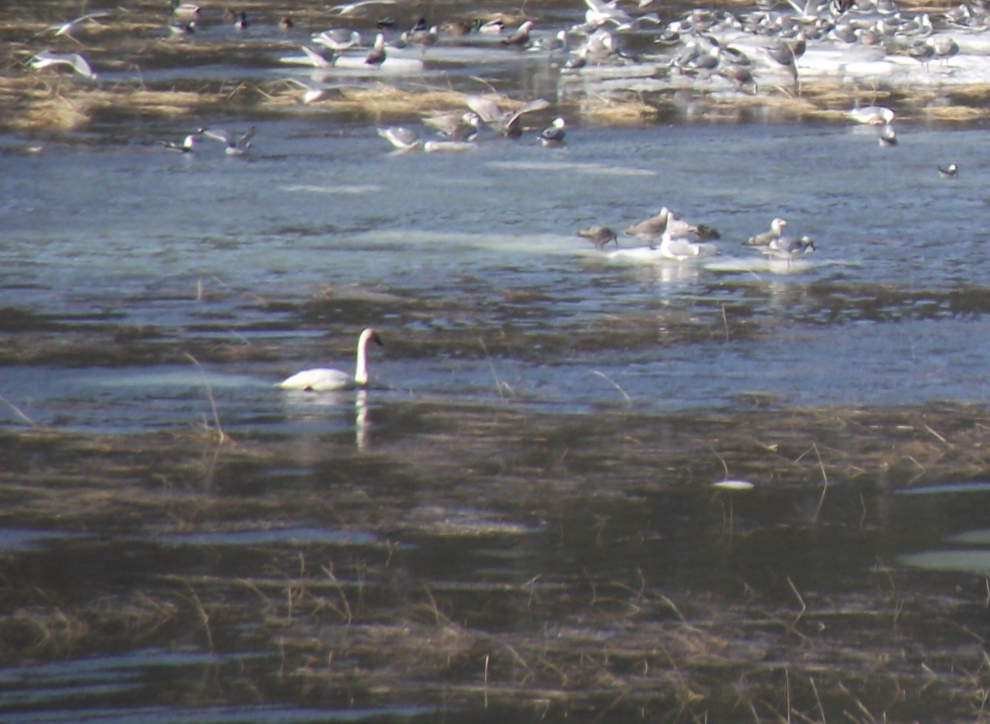
On the drive home, we noticed that there were a lot of tracks heading into the backcountry in the White Pass. In the foreground you can see 3 snowshoers with their 2 dogs, and in the background a kite-boarder.

What an amazing day. For all we saw, though, I was also somewhat puzzled by what we didn’t see. The were no orca, no sea lions, no bears taking advantage of the feast. The ADF&G report says that the Taiya River hooligan run is small (at least compared to the runs in the Chilkoot and Chilkat Rivers), so perhaps the sea lions and orca simply have better options at Haines.
